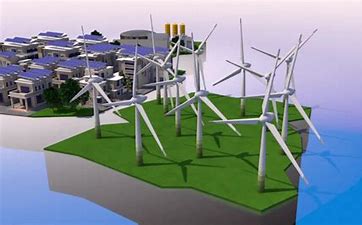Carbon-neutral manufacturing is possible
Amid a slow political process on climate change, businesses globally must step up their efforts to reduce carbon emissions.
Engineering and manufacturing can make an essential contribution to achieving net zero, as manufacturing plants, machinery, and sophisticated production processes are at the heart of global value creation everywhere.
The good news is that we can help to significantly limit global warming and reach net-zero emissions, using the technology and know-how we already have.
Three key priorities that will propel us more quickly on this journey – if we embrace them consistently:
- Focus all our efforts on minimising greenhouse gas emissions. Use all available levers for improvement, from the thousands of incremental refinements that add up to significant efficiency gains over time, to fundamentally designing and adapting large industrial plants and processes with the goal of climate neutrality.
We will need to question established routines and scrutinise every aspect: can we minimise the amount of stainless steel or other raw material and still get the same performance?
How can we reuse more of the waste we produce in production processes, or – even better – avoid it? And this line of questioning doesn’t stop within our own operations; we must encourage, or even require, our suppliers to do the same.
This is critical given that a significant amount of greenhouse gas emissions are generated in the supply chain.
- We must put energy efficiency front and centre. There is no doubt that energy efficiency improvements will have to play a crucial role in putting the world on a net-zero pathway.

In particular, heating and cooling require our immediate focus, as they account for a large proportion of energy consumption in processing plants – often between 50 and 90%.
By deploying state-of-the-art heat pump technology, manufacturers can capture their waste heat from refrigeration and then boost the temperature to produce heat suitable for other production purposes.
In our experience, highly efficient heat pumps can help manufacturers minimise their energy usage and reduce their CO2 emissions substantially – by as much as 50% or more. And when green electricity is used, this goes down to zero emissions.
Heat pumps boost low-temperature heat from sources like groundwater, sewage water, air or process heat and supply it at higher temperatures for use in district heating and production processes.
Due to their unique capabilities, heat pumps are relevant beyond industrial production processes and are now more widely used. A good example is district heating, where heat pumps enable innovative approaches for using waste heat to deliver more sustainable heating to many households and businesses.
- We must focus on forging closer customer relationships. Just as engineering companies must collaborate closely with their suppliers to curb emissions, they also need to engage more deeply with their customers.
Each customer is unique. Developing trusted partnerships offers the best chance for achieving a tailored solution that is both economically and ecologically superior. The optimal setup always requires good teamwork from the start.
Without an integrated approach, plants tend to be planned and then built piecemeal, with individual processes improved in isolation, if at all. In other words: to unlock substantial efficiencies, it is vital to bring in systemic engineering know-how early in the design process.
A concrete example of how such a holistic approach can lead to more sustainable results is illustrated at “the blender” – the world’s first carbon-neutral juice plant, built by innocent, the smoothie and juice brand.
With support from GEA, innocent’s Rotterdam facility has become a benchmark for plant design in the food industry. In fact, the project demonstrates the potential of combining all three priorities outlined above.
From the beginning, the innocent plant was carefully designed and then built to maximise resource efficiency by minimising energy consumption and waste. This required process, refrigeration and heating experts to work together, every step of the way.
The entire juice-making process was broken down into its individual components and then optimised. Energy recovered in one part of the plant’s processes is channelled to other parts of the plant.
For example, heat pumps capture waste heat from refrigeration and use it in other process steps, such as pasteurisation.
Creating large-scale carbon-neutral production processes is no distant prospect; it is already possible with technologies that are currently on the market.
Of course, technology alone cannot solve our challenges. Experience, know-how and the discipline to rigorously improve processes are also required.
And engineering companies need partners who are willing to go beyond business as usual – collaborating early on and throughout the duration of projects to achieve the best results.
Now is the time to take responsibility for our planet and its future generations. Already today, key sectors like engineering and manufacturing can make a big difference.
Empowered by close collaboration and technological prowess we can propel the world on a faster trajectory towards net zero. Reversing climate change is everyone’s business.
For those who are engineers, this is a highly motivating challenge.


